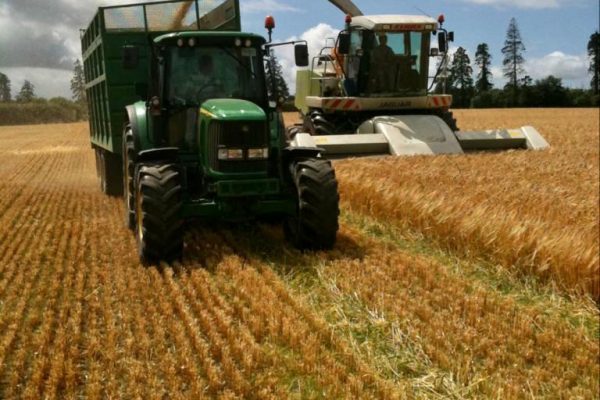Specialist Nutrition IE
Ballymountain, Waterford, X91 V6YR, Ireland
Specialist Nutrition IE
Ballymountain, Waterford, X91 V6YR, Ireland
Specialist Nutrition IE
Ballymountain, Waterford, X91 V6YR, Ireland

With first cut grass silage in the pit, it is time to turn the focus to cereal crops and what the best strategy is to maximise the benefits of locally grown cereals on your farm.
A key benefit of cereal crops is the flexibility with which they can be utilised and the fact that plans can be altered as the season progresses.
While forage stocks are generally high on farm with increased tonnage in the majority of first cut grass silages due to late harvest, quality has suffered.
Early results show that this is going to be a year of extremes, with early first cut grass silages analysing wetter, lusher and very high quality albeit with lower tonnage.
Now is the time to get the first cut analysed and stocks measured to establish how many tons of dry matter are already on farm versus what is required to meet the feed budget for the winter.
Conducting this review of the first cut grass silage you have produced allows you to make an informed decision as to whether a cereal crop will bring the most value to you as an additional source of high-quality forage or as a purchased feed replacer.
In the case of those who succeeded in harvesting an early, high quality grass silage then wholecrop will be of value in terms of ensiling more tons of high-quality forage for winter feeding. A high-energy forage comprised of slowly fermented starch along with the effective physical fibre from the straw, wholecrop will work exceptionally well to balance highly digestible, rich grass silage that is evident in the early cut analyses.
If harvested forage stocks are already on or ahead of target to meet the required budget, then crimping cereal grains to produce a rumen friendly energy source that displaces purchased feed may be the better option for your farm.
Crimp grain is a high energy, moist concentrate which can replace purchased feed on the farm. As a fermented feed, crimp can be managed in the diet to increase cereal inclusion rates while managing the risk of ruminal acidosis. Crimp will also allow straw to be harvested for bedding use which can be very attractive in a year when straw prices are high.
If local or home-grown cereals are not a part of your current plan it is not too late. By analysing what you have already ensiled on your farm and measuring the stock, you can adapt your feed plan to now make it work better for you this winter.
Chat to Specialist Nutrition about an on-farm feed assessment of your forage stocks and winter-feeding plan.
Grow your Potential with
Specialist Nutrition | Moist Feed and Forage Specialists
Call 051 833071 or WhatsApp Amy on +353 87 408 1002.

